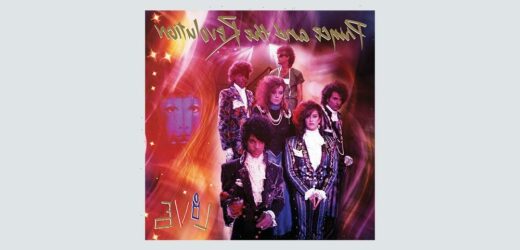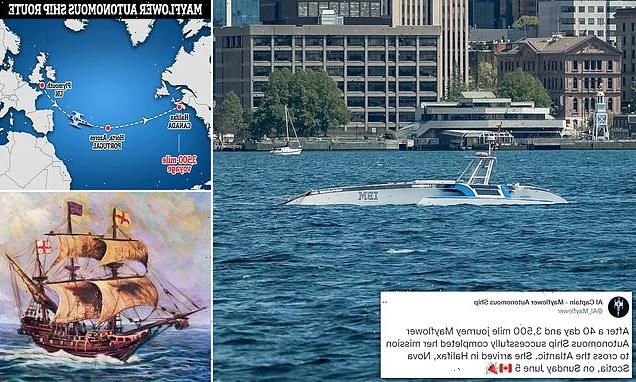Prince’s musical career had many peaks, but he was most on top of the world — literally — on March 30, 1985, when he and the Revolution played a concert at the Carrier Dome in Syracuse, New York that was broadcast all over the planet in the first global telecast of its kind.
Even with the “Purple Rain” album, film and tour at the peak of their Oscar, Grammy and chart popularity, and the 100-date tour in support of both nearing its end, Prince was never one to stay in the same place for long. By that date, he and the Revolution had completed their next album, “Around the World in a Day,” and were already working on the next one (“Parade”), and would embark for the South of France to shoot their next feature film, “Under the Cherry Moon,” within a few weeks. Thus, he’d decided to end a tour that easily could have gone on for another few months at least, and instead of touring Europe and Japan, they decided to make that concert a global telecast.
The concert, which has been given the deluxe boxed-set treatment, captures the band in peak form and is a vivid documentary not just of the stunning “Purple Rain” tour, but also of Prince’s once-in-a-generation artistry. Just 26 at the time, he was already at the peak of his powers as a singer, musician and performer: He’d sing, played a virtuoso-level solo on guitar or piano, then jump up, do a split, break into some dancing that would rival Michael Jackson and then lead the band through a complicated musical passage — all in four-inch heels.
After the broadcast, the concert — simply titled “Prince and the Revolution: Live” — was available on VHS during the 1980s but dropped from view after Prince, in his tireless effort to own his creative work, pulled it off of the market. It was reissued in 2017 as part of the “Purple Rain” anniversary boxed set, but finally, some 37 years later, it’s truly getting its moment in the sun again. Sony Legacy has remastered, rescanned, restored, color-corrected, repackaged and re-whatever’ed it as a stand-alone album, boxed LP/CD/Blu-ray set with selectable stereo, 5.1 surround, Dolby Atmos sound, spatial audio and whatnot that will show generations past, present and future what all the fuss was about.

As part of Variety‘s series of articles published on Prince’s birthday, we spoke with the Revolution’s Bobby Z (who’d played with Prince since 1976), Lisa Coleman (since 1980), Wendy Melvoin (since 1983) about the tour and the show. They’ve all been active in the years since they left Prince’s band in 1986: Bobby with production and a number of musical projects, Wendy and Lisa as Emmy-winning film and television composers (currently at work on the second seasons of both “Cruel Summer” and “Firefly Lane”), and all three — with bassist Brown Mark and keyboardist Matt Fink — as the Revolution, which toured from 2017 until the pandemic began, and may again, although as you’ll see below, they have mixed feelings about it.
But for this conversation, they went back to that stage at Syracuse’s Carrier Dome, just days from the end of the “Purple Rain” tour.
Do you consider this concert the peak of the Revolution’s career?
Bobby: It was definitely a pinnacle. If you look at the whole “Purple Rain” experience — rehearsing and recording the album, rehearsing and shooting the movie, then the tour itself — it’s probably one of the longest periods of time that Prince spent on one project. Pressure and time, with the right situation and ingredients, created the diamond: the right music and, after Wendy’s arrival, the right band. You know, bands are living, breathing things, and she was the final puzzle piece that gave it the right chemistry and momentum, which we still have to this day.
And here, we were close to the end of the whole “Purple Rain” experience, which gives it an extra bounce. The [satellite broadcast] was pretty new stuff back then, and it created even more excitement, because it was this live TV event. It happened to be one of the better shows on the tour, and the [recording] really, really captures it. I mean, it was it was really something special — by Syracuse, he was determined to end this thing on a high note.
Wendy: It was intense. There was a lot of pressure not to make any mistakes, and Prince really played by more rules than he normally would have that night: There wasn’t any experimenting or long grooves or new arrangements, like we usually would do, and there weren’t any expletives. The shows had had a life of their own up until that point, but we knew that we had a certain amount of time to get the show in and out: You could tell Prince was really locked into keeping it within the confines of … how long was it? Just under two hours? It’s an unusually tight and disciplined set; we cut off all extra fat in order to keep it to that time. We were really fortunate that we had been on the road for as long as we had. We had to really play by the “Purple Rain” playbook that night and give it 200%.
Lisa: Because it was on camera and highly pressurized, it had a different feeling than the rest of this tour. Other shows were probably more authentic in a way, and looser, even though even though we were always really tight. It’s concise — which is a kind of funny word to use, because you never knew what was going to happen in our shows. He could say “Give me one, gimme two, gimme 25!” or things like that, when he would show off the band and, you know, how he could spin us around on his finger and do all his magic tricks.
And once this show was over, there were really only a few left before the [final concert of the tour at Miami’s] Orange Bowl. Those last few shows were more relaxed and there was a lot more improvising, and a lot more songs from “Around the World in a Day” dropped into the set.
Wendy: We were already onto a whole new thing. And one of the reasons why that show was televised is because Prince was tired of the material and basically playing the movie every night. He wasn’t one to linger, you know what I mean? And I know that fans in Europe were really bummed that we weren’t gonna go over and tour, and that’s why we did this pay per view live performance worldwide. But he was really anxious to get on to the next project.
There was actually quite a bit of time between the album being released late in June, and the film a month later, and the tour beginning in November. What were those early shows like?
Bobby: I don’t know that there’s any other rock and roll movie like “Purple Rain” — for a brief time, we were kind of movie stars (laughs), and that kind of gave the tour a different thing. Having all that under our belts and then going on tour definitely made it surreal — actually bringing this music to people was just incredible. And he was just sensational: He was moving, dancing, playing like nobody had ever done before. That’s why we’re still talking about Prince to this day, and that’s why Sony is so excited about this show, because you’ve got to see it to believe it.
Wendy: It was a trip. At the first gig in Detroit, the audience was insane — onstage, [your ears] were almost distorting from how crazy the audience was, in anticipation for the show to start. And we suddenly we had bodyguards and limousines — it was totally different than driving yourself to rehearsal and eating White Castle. But that’s something I think Prince loved about living in Minnesota, it kind of kept him grounded. He didn’t have to compete with being the biggest and baddest in town — he was the biggest and baddest in town, there was no one who could come close. He owned that city.
Lisa: That’s true. In L.A. and New York, he was constantly showing up at hotspots and there were other hot celebrities and artists there as well, and I think that competition could get tiring for him sometimes — although he loved the adrenaline of trying to kick somebody’s ass, whether it’s “I can dress better than you” or “I can play better than you” or “I can smell better than you.” (Laughter)
Didn’t you have Springsteen and Madonna onstage at the same time at one of the L.A. shows?
Wendy: Yeah, a lot of people came up: Sting, Bruce, Madonna, guys from the Stones. But he could be terrible: Sometimes his competition was so maniacal. Like when Sting came onstage, Prince put the bass in his hands and then he started leading us through all this fancy stuff that we knew, and Sting was like [throws hands up in confusion]. Prince kind of relished the idea that Sting couldn’t do that. And it was just like, why are you doing that to poor Sting?
Did he do things like that often?
Wendy: Let’s just say you’re driving in a car and everybody’s singing at the top of their lungs. He’d be the guy that would turn the radio off just to hear you go “WAAAH!”
Lisa: Yeah. Yes, he did seem to enjoy making people feel uncomfortable, or stupid.
Wendy: I don’t know if he was trying to make them feel dumb. I think he just wanted to rattle people.
Lisa: Well, it worked.
Wendy: He rattled us all!
It’s hard to think of another tour like “Purple Rain,” with the kind of self-fulfilling prophecy of the film coming alive onstage. Did things change? Did he change?
Lisa: Yeah. It felt really different for us. I mean, speaking for the band — I had been there since “Dirty Mind” and we did everything together: We were in the same cars, the same buses, the same hotels. And then with “Purple Rain”…
Wendy: He distanced himself.
Lisa: I mean, I don’t know if it was him intentionally. I think that just the situation with management, everybody felt like he needed to be… He was the racehorse and needed more security and to travel separately and all that stuff. So it affected our relationship — it was weird to see him only at soundcheck, and not all of us having just gotten off the same plane and, you know, feeling all funky at the same time. Just normal things like that. It had to have affected him.
Bobby: As it got bigger and bigger and bigger, people had an agenda and they would take him away: “I need you for this, I need you for that,” some of the biggest names in the world wanted to talk to him, and that definitely pulled him away. But something magical happened when we could get Prince alone, we could go back to how it was in the early days — even after I was in the band. He needed people that he could just see a movie with or laugh with or goof around with, and he definitely came down to earth. But during this time, I mean, this guy was on top of the world — in a way that maybe no one will ever be again.
Was it still fun?
Bobby: You know, nothing felt better than a good show — and nothing worse than a bad show. You’re just trying to make this guy happy every night, and the “Purple Rain” tour had a really good success rate: There were very few mistakes, even though technology was being pushed to the limit — and let’s just pause for a second and talk about Roy Bennett’s set design and lighting and the innovation that he brought to the stage, with elevators and tunnels underneath the stage and all that technology. But Prince was so disciplined as a bandleader and as a musician, because no matter how loud it was, he heard everybody onstage — every note, everything, so it was very festive at the end of a good show.
We had reached the mountaintop, but a tour like that is exhausting: The travel, and it’s a tremendous amount of pressure to perform on that level. It can be wearing on you, mentally and physically. It’s not a lighthearted affair, at all. And remember, for me, it started in 1976 — so after 10 years, the intensity of reaching that pinnacle was beyond belief. But yes, I was happy when it was over.
Wendy: It was always fun and it was always definitely exciting. But you needed to keep your shit together — there was no fucking around on tour. You had to show up for work. You couldn’t be fucked up, you couldn’t be entitled or overly privileged. You’re doing your job. It was hard core. And we loved every second of it.
The shows you played as the Revolution, after Prince passed, were amazing and so emotional. What’s the status of the band?
Wendy: Well, we were on and off the road for a couple of years after he passed away — we had our last show literally the day before the world shut down. We’ve talked about maybe picking it back up, but we’re sort of having second thoughts on what the right way to do it would be, and how to do it, and when. It’s all kind of up in the air right now.
We’re missing our main guy — we’re missing our leader, so it’s hard. It ends up being a sort of… I guess I would say an insatiable mourning period. The beast doesn’t get satisfied. So it can be very difficult emotionally to do that every night, because everybody wants to relive it. The sadness always inevitably plays a big part in it, and that can be really difficult on us, because each one of us are grieving in different ways, and when we collectively do that, we can become like this grieving monster. I mean, there’s joy in celebrating it, and we love it and the audience eats it up. But you’ve got to question whether it’s sustainable, and some days I wonder if it is? We’ve talked ad nauseam about whether or not it’s healthy. We love playing and the connection with the audience is amazing. But it’s bittersweet, and sometimes the bitter just outweighs the sweet.
Anything more you’d like to say?
Lisa: This recording is a chance for fans that knew it or who even were there to look back and say, “I’m not crazy — it really was that amazing,” because your memory might have embellished or forgotten things. When I was watching, I was really like, “Wow, it’s amazing.”
Wendy: Prince fans already have had this material for a long time, so what I hope happens is that Sony can reach a new audience and turn a new generation on to what it’s like to be that kind of performer, with his kind of discipline and his kind of dedication — and how tough and badass Prince actually was, and what it took for him to get from the North side of Minneapolis to performing that show in Syracuse. It took an incredible amount of focus and dedication, and he did exactly what he’d said he was going to do.
Bobby: Everybody has dreams. But to have someone say them right in front of you, and then deliver on them and take you with him, is pretty, pretty amazing. I really am grateful that he saved me from a normal life.

Source: Read Full Article


